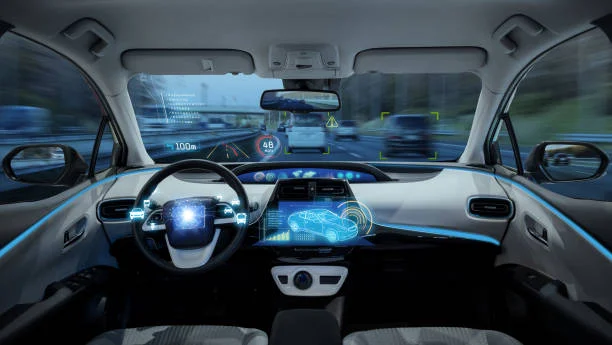Introduction
Automotive safety technology is advancing unprecedentedly, setting new standards for how we interact with our vehicles and the world around us. Integrating sophisticated systems—from intelligent sensors to robust data networks—is revolutionizing how we drive, making roads safer and significantly reducing the risks of accidents and injuries. These advancements are not just incremental upgrades; they represent a fundamental shift in how safety is perceived and implemented throughout the automotive industry. The ripple effects of innovation are palpable for drivers, passengers, and even pedestrians. Yet, despite technology’s best efforts, accidents can still happen, which is why having the resource of a Car accident attorney in Memphis, TN, is so vital. Legal professionals ensure that, no matter how prepared you may be, you have expert guidance and support when facing the unexpected on the road.
Understanding these innovations becomes crucial as modern automobiles incorporate more sophisticated safety features. It’s not simply about choosing the safest car; it’s about gaining the knowledge and confidence to use technology to become a more proactive, responsible, and informed road user. Embracing these developments means making informed decisions at the dealership and fostering everyday habits prioritizing safety for ourselves, our passengers, and everyone we share the road with. In this article, we’ll break down the most impactful advancements in automotive safety and explore how each is reshaping the future of driving.
Advanced Driver Assistance Systems (ADAS)
Advanced Driver Assistance Systems (ADAS) are at the forefront of automotive innovation, paving the way toward semi-autonomous and eventually fully autonomous vehicles. These integrated systems combine sensors, cameras, radar, and artificial intelligence to watch a vehicle’s surroundings constantly. By capturing and processing vast amounts of environmental data, ADAS technologies can predict, identify, and mitigate possible dangers faster and more consistently than human drivers alone. From monitoring lane positions to scanning for nearby vehicles or obstacles, these features serve as an ever-vigilant co-pilot, reducing the workload on drivers and intervening instantly when necessary.
Core ADAS Features
- Lane Departure Warning and Lane Keeping Assist: These systems are particularly effective at addressing the all-too-common hazard of unintentional lane drifting. By tracking lane markings, the technology alerts you with visual, audio, or haptic signals if the vehicle veers without signaling. The Lane Keeping Assist function takes safety further, gently nudging the car back into the correct lane, which can be critical during periods of fatigue or distraction.
- Adaptive Cruise Control: This system takes cruise control to the next level by automatically adjusting your vehicle’s speed to maintain a safe following distance from the car ahead. It’s invaluable in stop-and-go highway traffic, as it can reduce the risk of rear-end collisions and driver stress by accurately managing acceleration and braking.
- Automatic Emergency Braking (AEB): Leveraging forward-facing sensors, AEB constantly scans for obstacles. If it detects an imminent collision, the system can automatically apply the brakes, sometimes faster than a human driver’s reflexes. This functionality has significantly reduced the severity and frequency of crashes.
According to the National Highway Traffic Safety Administration (NHTSA), widespread implementation of ADAS features has contributed to notable reductions in certain types of road accidents, especially those involving lane departures and rear-end collisions. These developments continue to shape the road ahead, providing a powerful new layer of protection for all drivers.
Vehicle-to-Everything (V2X) Communication
V2X technology expands the capabilities of every vehicle, transforming them from isolated units into connected nodes within an innovative mobility ecosystem. The goal is seamless, real-time communication between vehicles (V2V) and between vehicles and infrastructure (V2I), such as traffic signals, road signs, and even intelligent city networks. This web of connectivity allows vehicles to share critical information—including speed, location, direction, traffic patterns, road hazards, and even weather conditions—with each other and city infrastructure in milliseconds. By working together, these systems help anticipate risks that human drivers may never see coming, thereby preventing dangerous situations before they arise.
Key Benefits of V2X
- Collision Prevention: By constantly broadcasting and receiving information about speed, position, and direction from nearby vehicles, V2X makes it possible to anticipate and avert potential collisions—especially in complex or high-traffic environments, such as multi-lane intersections and roundabouts.
- Traffic Signal Timing: V2X systems can connect with smart traffic signals to give drivers advance notice of signal changes, enabling them to adjust their speed for smoother stops, fewer abrupt braking incidents, improved fuel efficiency, and reduced likelihood of rear-end crashes at intersections.
- Pedestrian Detection: Advanced V2X systems can even communicate with personal devices carried by pedestrians and cyclists, using real-time alerts to warn drivers about vulnerable road users who may suddenly enter the roadway, bolstering safety in urban environments and school zones.
Federal agencies such as the Federal Highway Administration recognize V2X’s transformative potential for traffic efficiency and safety. They predict that this technology will play a pivotal role in drastically reducing accidents and fatalities as it becomes integrated across more vehicles and cities.
Biometric Monitoring Systems
Fatigue and distraction are leading contributors to traffic accidents, often unnoticed by even the most experienced drivers. Biometric monitoring systems use advanced sensor technologies to solve this problem at its source. By monitoring vital physical signals—such as heart and respiratory rate, eye movement, eyelid closure, head position, and even grip on the steering wheel—these systems can gauge a driver’s state of alertness and detect early signs of tiredness, inattention, or distress.
- When biometric parameters point to drowsiness or distraction, the vehicle issues instant alerts—audible alarms, seat vibrations, or dashboard messages—to grab the driver’s attention and encourage a break or re-focus. This technology helps address crashes that occur due to micro-sleeps or split-second distractions.
- The most advanced platforms are integrated with vehicle comfort controls. If ongoing fatigue is detected, the vehicle can automatically adjust seat ergonomics, alter climate settings, or—in the event of driver incapacitation—activate emergency protocols such as safely slowing and stopping the car or contacting emergency services.
Looking ahead, integrating biometric data with artificial intelligence opens doors to a fully personalized and adaptive cabin environment, where safety, comfort, and vehicle performance work seamlessly together for the optimal driving experience, making every journey safer and more enjoyable.
Enhanced Airbag Systems
Since their introduction decades ago, airbags have been credited with saving countless lives, but today’s systems go far beyond fundamental driver and passenger protection. Modern airbag systems are engineered to deploy with unparalleled precision and adaptability. They use inputs such as collision angle, occupant size and posture, seatbelt status, and crash severity to tailor their inflation strength, speed, and direction for the specific situation.
- Advanced algorithms ensure optimal airbag deployment, maximizing occupant protection while minimizing the risk of injury from the airbag itself—especially for children or smaller adults in various seating positions.
- Innovations now include external airbags that deploy around the outside of the vehicle to offer additional cushioning in side collisions, protecting not only those inside but also pedestrians and cyclists in the event of a crash.
- Side-curtain airbags and multistage inflators enhance safety in rollovers and side impacts, offering a customized and comprehensive approach to accident mitigation.
The Insurance Institute for Highway Safety (IIHS) has highlighted how these breakthrough technologies sharply reduce the risk of fatal and severe injuries, especially in crashes involving vulnerable sides of the vehicle. They provide reassurance for all occupants, regardless of size or seating arrangement.
Night Vision and Thermal Imaging
Night vision and thermal imaging technologies help drivers navigate low-light conditions by enabling them to see beyond the reach of ordinary headlights. These systems use infrared sensors to scan the road and surrounding areas, detecting heat signatures from living beings and moving objects. These images are displayed on the dashboard or projected onto the vehicle.
Explore related articles to deepen your understanding before you go.







